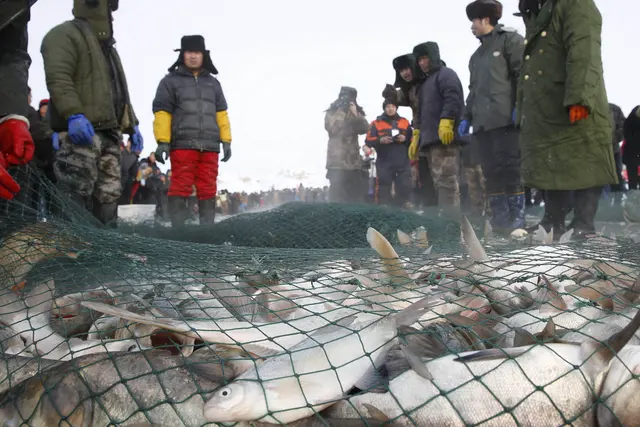Xinjiang saw sharp declines in imports and exports with Russia and countries in Central Asia as a result of weakening currencies, slowing growth and slumping demands, according to data released by the local customs office.
Foreign trade volume for the region totaled 19.7 billion U.S. dollars in 2015, down 28.9 percent year on year. Exports shrank by 25.4 percent at 17.5 billion dollars, while imports plunged by 48.2 percent at 2.2 billion dollars.
Exports of electromechanical products, textiles and shoes dropped by 11.4 percent, 45.2 percent and 27.9 percent respectively, according to the data from Xinjiang Customs.
The declines have been partly attributed to slower growth among emerging markets in the region, which are experiencing difficulties brought about by lower energy prices, acute structural imbalance and capital outflow, said Duan Xiufang, an economist with Xinjiang University of Finance and Economics.
A weak economy in neighboring Kyrgyzstan has resulted in a substantial depreciation of its currency and sluggish domestic demand. Moreover, a hike in tariff rates after Kyrgyzstan joined the Eurasian Economic Union has not helped the trade downturn.
Economists say a similar situation is occurring in Kazakhstan, which is also a member of the union that went into effect on Jan. 1, 2015.
Leaders of Belarus, Kazakhstan and Russia signed an agreement to establish the economic union in 2014. The accession of Armenia and Kyrgyzstan became official in 2015.
Xinjiang government has rolled out new policies since last year to encourage overseas investment, expand trade cooperation and lower transportation costs.
Fast customs clearance for agricultural products is now available at ports on the China-Tajikistan and China-Kyrgyzstan borders. Similar schemes will be launched at ports to Mongolia and Pakistan by the end of next year, according to the National Port Office.
"Xinjiang's agricultural trade with Central Asian countries is expected to grow significantly," said Huang Shengqiang, director of the Port Office.
"We are mulling the inclusion of electromechanical and energy products to the fast clearance list," Huang said, adding that the new clearance system will likely be promoted to more countries.
Still, certain large enterprises in Xinjiang posted good export data for the past year. High voltage transmission and wind power equipment both registered rapid growth, data showed.
"Though traditional electromechanical equipment showed a decline, exports of packaged services, which include the equipment, installation and training, continue to grow fast," said Duan.
Wu Wei, vice manager of Xinjiang-based TBEA power engineering services provider, said the company registered 1 billion dollars of foreign trade in 2014, and expected this to exceed 2 billion dollars in 2015.
A high-end machinery manufacturing base is taking shape in Xinjiang as more companies move to the far western region in the hope of expanding to the Central Asian market.
China is shifting its energy exploitation and equipment manufacturing industries from its central and eastern provinces to Xinjiang as a part of the larger Silk Road Economic Belt strategy.
"As more Chinese companies flock to share the dividends of the initiative by exporting to and investing in Central Asia, countries in the region will also step up infrastructure construction and renewable energy exploitation," Duan said.
 简体中文
简体中文

